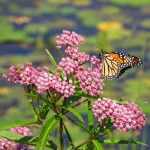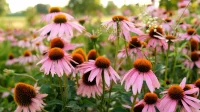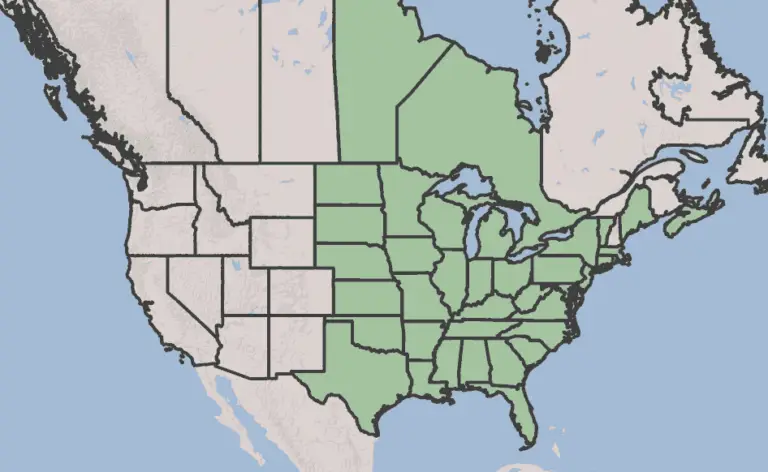This is a tall, showstopper native flower. Culver’s Root blossoms at the end of summer on long, elegant stalks. They look especially amazing when planted in groups. They like moist, sunny, or part-sun areas and are great paired with bright, tall native flowers like coneflowers. And who is Culver, you ask? Well, read on to find out!
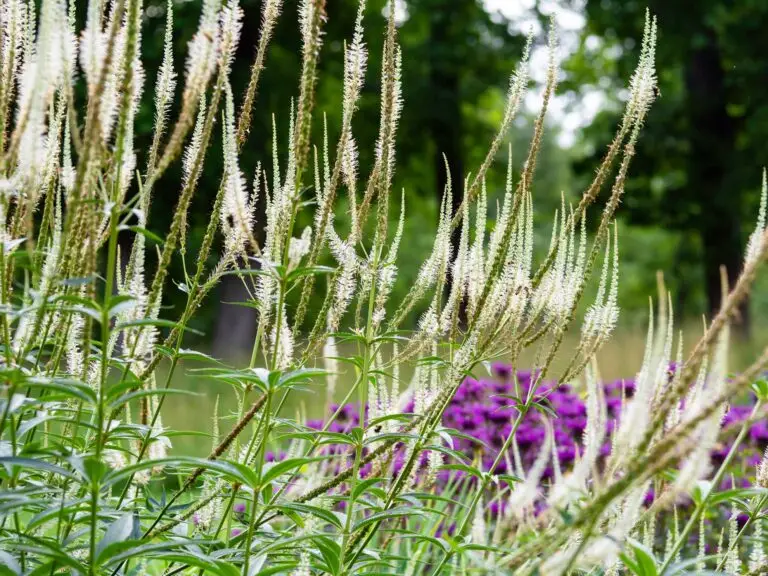
Dig Deeper
Explore the history, types, and where to plant native Culver’s Root
Table of Contents
Culver’s Root is the perfect native flower to plant in a large group, paired with a few native flowers. Its tall, stately spires look incredible paired with bright native perennials.
Why is it called Culver’s Root?
According to the Missouri Department of Conservation, the common name ‘Culver’s Root’ comes from an early pioneer doctor from the 17th or 18th century who used the plant to help patients with stomach issues by causing vomiting! (The roots are toxic; eating them will cause vomiting.) Causing someone to throw up was a common way of ridding a patient of “dishumors” during the early European settler days. Many native plants that are toxic were used in this way hundreds of years ago.
However, unlike some other common plant names named for historical people (Joe Pye Weed comes to mind), we’ve been unable to find a scholarly paper that puts this potential myth to rest. Culver may have existed, or it may be a figment of early America’s collective imagination as early European settlers named the plants they encountered.
So, how do you ensure you’re getting this plant when you’re at the nursery?
Latin names are a big help
Today, if you’re looking for this beautiful native plant, it’s best to look for its singular Latin name: Veronicastrum virginicum. All plants have only ONE Latin name, which makes finding one plant among millions easy. (And no, you don’t need to learn Latin to get into native gardening!)
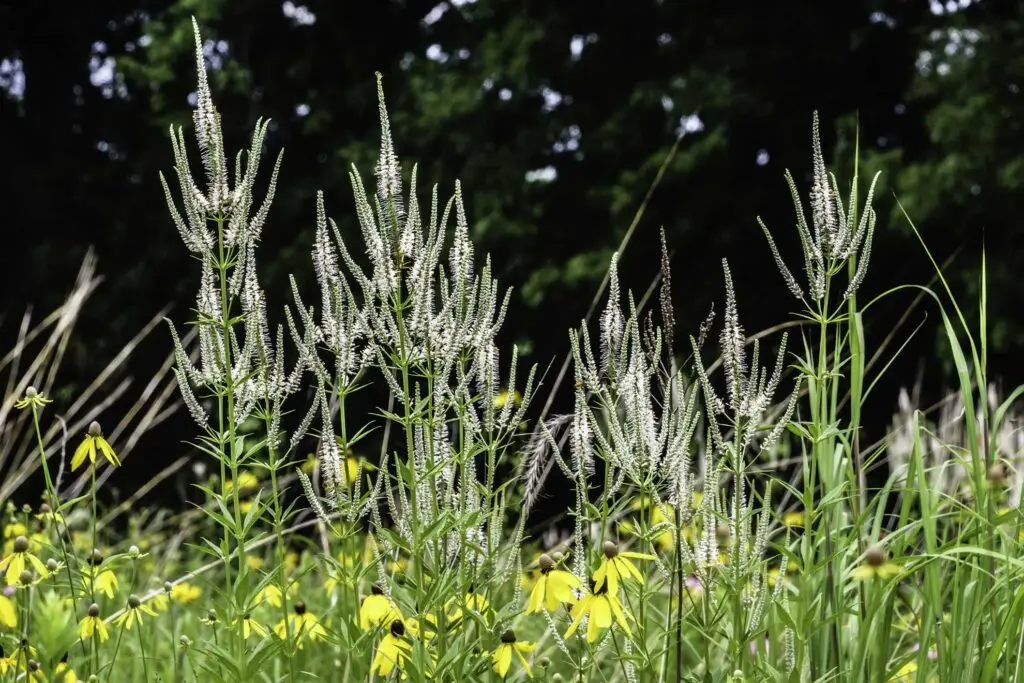
Now, let’s move on from this native plant’s strange name and learn how to plant it.
How do you grow Culver’s Root?
Keep a few gardening tips in mind to easily grow this native flower:
- This plant loves full sun. It can also thrive in part sun, but the showiest flowers come when it’s in 6+ hours of sun a day.
- Culver’s Root likes to be consistently moist. Dry gardens are challenging for this plant.
- And in a well-drained area. While this native plant likes consistent water, it doesn’t like to be water-logged. Plant in a place where the water drains out after heavy rains (even just a slight incline—like a hill—can work!)
- Culver’s Root gets TALL: 2-6 feet on average! Plant shorter native perennials in front of it (like Bee Balm) and taller natives alongside it (like coneflowers and Blazing Star.)
Where is Culver’s Root native?
Culver’s Root is native to half of North America, from Texas east to the Atlantic Ocean. This huge native range is similar to other native plants like Highbush Blueberries, Purple Coneflowers, and many native Magnolia trees.
How should I plant Culver’s Root?
Culver’s Root looks especially amazing when planted in a group of 5 or more. Because it looks so good planted in a group, we’ve included it in our round-up of Single-Plant Gardens, which are landscaping ideas driven by a single plant (aka one-stop landscaping.)
When does Culver’s Root bloom?
Culver’s Root blooms with its gorgeous white spires in the late spring through to early summer. According to NC State Extension, cutting them down to the rosette may deliver another flowering in the fall.
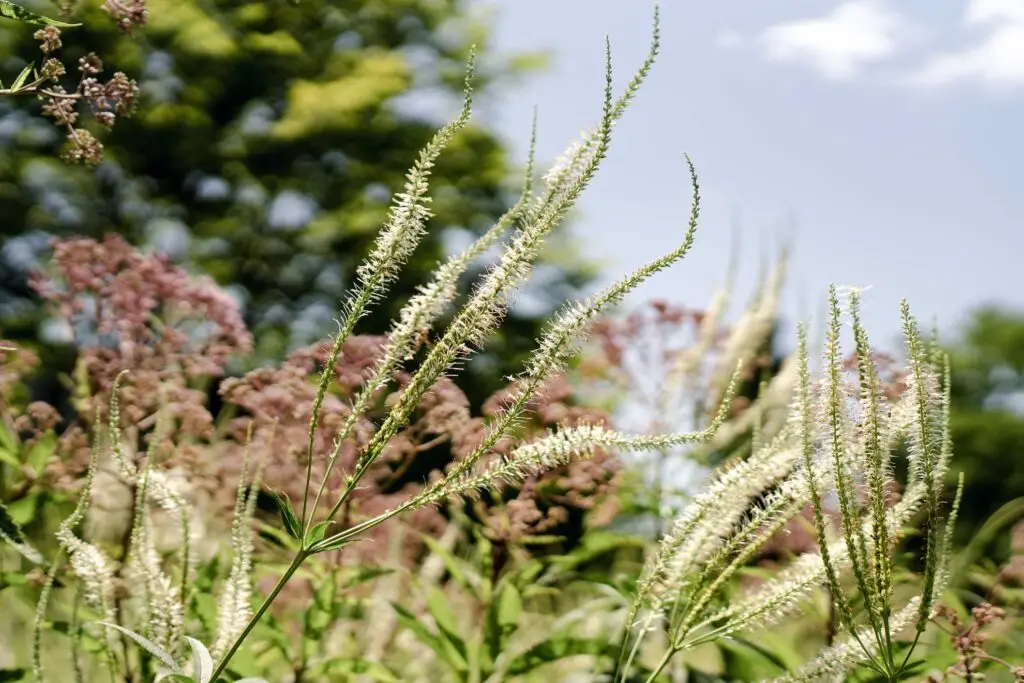
Where can I buy or find Culver’s Root?
Native plants like Culver’s Root can sometimes be challenging to find at conventional plant nurseries. We’ve put together four resources to help making sourcing this native flower easier:
Where can I find seeds and plants?
Finding native plants can be challenging (we partly blame Marie Antoinette.) To make it easier, we’ve assembled four sourcing ideas.
Native Plant Nurseries
Our list of native nurseries makes finding one a breeze
Online Native Plant Sellers
We've included 100+ online resources to help
Society Plant Sales
Every state has a native plant society; find yours
Online Communities
Local Facebook groups are a great plant source
What are good pairings for Culver’s Root?
Culver’s Root is amazing paired with other native perennial flowers that offer bright pops of color. Favorites include coneflowers, Blazing Star, Joe Pye Weed, Ironweed, and Nodding Onion.
And that concludes our love letter to Culver’s Root! Culver’s Root is exceptionally easy to grow and since it’s a perennial, plant once and it will come back year after year. Its tall, stately flowers look amazing at the end of the summer. Plant them in groups of five or more to ensure they are admired in their full glory. Culver’s Root is a beautiful addition to any Mid-Atlantic, Midwest, Northeast, or Southern garden. Happy planting!
Sources
- Nelson, Gil. Best Native Plants for Southern Gardens: A Handbook for Gardeners, Homeowners, and Professionals, (2010).
- Harstad, Carolyn. Go Native! Gardening with Native Plants and Wildflowers in the Lower Midwest. (1999), 137-138.
- NC State Extension, Culver’s Root
- Ladybird Johnson Wildflower Center, Culver’s Root
- Missouri Botanical Garden, Culver’s Root
- USDA Plants Database, Culver’s Root
- Rutger University, “The Culver’s Root Fan Club”
